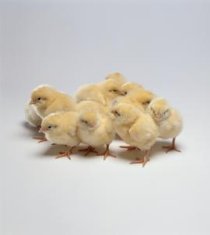Epidemiology of Chicken Infectious Anemia
The Chicken Anemia Virus is distributed worldwide. It was first isolated in Japan in the 1970’s and serum samples from the 1950’s have shown to test positive in a competitive ELISA.
It is generally accepted that chickens are the natural hosts of CAV; all ages of chickens can be infected. CAV has also been isolated from other species such as turkeys and CAV antibodies have been detected in quails.
The most severe clinical signs are seen in chickens younger than 2 weeks of age. Morbidity and mortality rates are high dependent on the age of the chickens when infected. Chickens develop age resistance to disease (> 2-3 weeks of age) but remain susceptible to infection. In younger birds the presence of clinical signs depends on:
- the challenge dose
- the level of the maternally derived antibodies
- the presence of other immunosuppressive agents (such as Marek’s Disease virus, Reovirus or Infectious Bursal Disease virus). Immunosuppressive agents act synergistically increasing the severity of the disease and overriding the protective effect age and maternal antibodies.
Spread of the virus
CAV is not highly contagious and it takes few weeks to spread through an entire flock.
Horizontal transmission is through infected organic material or contaminated equipment.
Vertical transmission is also very important and occurs when breeder flocks get infected during the production period; this occurs especially in younger flocks.
Transmission of the virus may occur during 3 – 6 weeks after infection.
Latency in SPF birds has been reported, with the virus being shed sporadically.

Chickens develop age resistance to disease but remain susceptible to infection.
Merck Animal Health headquarters
Go to the Merck Animal Health website to find out more about the company and read about other innovative products available.
